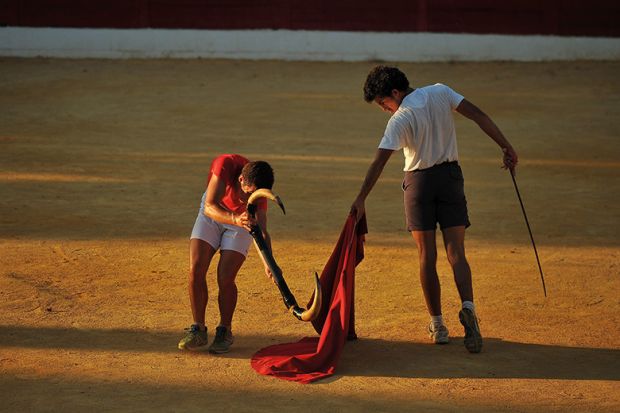The European University funding divide is getting wider, with many countries in Southern, Central and Eastern Europe failing to repair cuts to public spending made since the financial crisis despite an economic recovery, and so falling further behind better-funded systems in the north.
This is one of the conclusions of a new analysis of public funding for higher education by the European University Association, which finds that 19 higher education systems received less public money in 2016 than they did in 2008.
Enora Bennetot Pruvot, deputy director for governance, funding and public policy development at the EUA and one of the report’s authors, explained that some countries were making progress back to pre-recession levels of funding. Iceland, for example, one of the nations worst hit by the crisis, should be back to 2008 levels this year, according to Public Funding Observatory Report 2017, released on 13 December.
But many others remain below their 2008 levels, including the UK (where student loans have largely replaced direct grants, thus maintaining teaching funding), Spain, Italy, much of Central and Eastern Europe and the Baltic states. In Spain, despite a nominal increase in funding of 5 per cent in 2017, there is still “no sign of a renewed commitment to the sector” after years of cuts, Ms Pruvot said.
Many of these countries – including the Republic of Ireland, the UK, Italy, Finland and several states in Eastern and Central Europe – have enjoyed economic growth over this period and yet have still cut back on higher education, the report warns.
The funding picture is much better across richer northern European social democracies. Inflation-adjusted spending has increased by more than 20 per cent in Germany, Switzerland, Austria, French-speaking Belgium, Denmark, Sweden and Norway. France, Flemish Belgium, the Netherlands and Poland have enjoyed funding boosts of between 5 per cent and 20 per cent.
But even some of these better-funded systems are creaking under pressure from large rises in student numbers, Ms Pruvot warned. In Denmark, Germany, Belgium, France and the Netherlands – where there have been headlines about international students forced to sleep in cars because of a lack of accommodation – increases in undergraduate numbers have outpaced bumps in funding.
An analysis of staff trends shows that some countries have prioritised research by employing more academics, she explained, while others have focused on student support by hiring more non-academic staff.
Since 2008, Germany has hired 40 per cent more academics but has increased non-academic staff numbers by only about 15 per cent, suggesting a strong focus on research. Denmark posted similar figures.
In Austria, meanwhile, academic numbers have virtually stood still, but non-academic staff numbers have shot up by more than a fifth. According to the report, Austria, Norway and Sweden are the only countries with “sustainable funding trajectories, allowing them to preserve student-staff ratios”.
The report also includes more recent data from 2017 for most of the countries surveyed (some have yet to release figures for this year). It shows that England and Wales are the only two countries still cutting back on public funding. This is in contrast to big 2017 bumps in funding in countries that have suffered serious cuts in the past, including Hungary, Spain and Ireland.
The report, which looks only at public funding, cannot account for the extra money from tuition fees that English and Welsh universities have received in this period, Ms Pruvot acknowledged. But the UK (with the exception of Scotland) remains the only country in Europe to have seriously shifted from a public funding model to tuition fees since the financial crisis, she said. The Netherlands has introduced slightly higher fees, “but the British experiment is unique” in scale, she said.
Despite severe government budget constraints in the wake of the crisis, across the rest of Europe “by and large the funding system…has not significantly changed”, she said.
The report also warns countries against plugging holes in their national budgets with European Union funding. Competition for grants from Horizon 2020 had cut success rates down to about 10 per cent, it points out, “while between 30 and 50 per cent of the funding that countries receive from Horizon 2020 goes to cover the costs of the total number of applications, successful or not”, it adds.
POSTSCRIPT:
Print headline: European funding gap grows as stragglers flail
Register to continue
Why register?
- Registration is free and only takes a moment
- Once registered, you can read 3 articles a month
- Sign up for our newsletter
Subscribe
Or subscribe for unlimited access to:
- Unlimited access to news, views, insights & reviews
- Digital editions
- Digital access to THE’s university and college rankings analysis
Already registered or a current subscriber? Login





